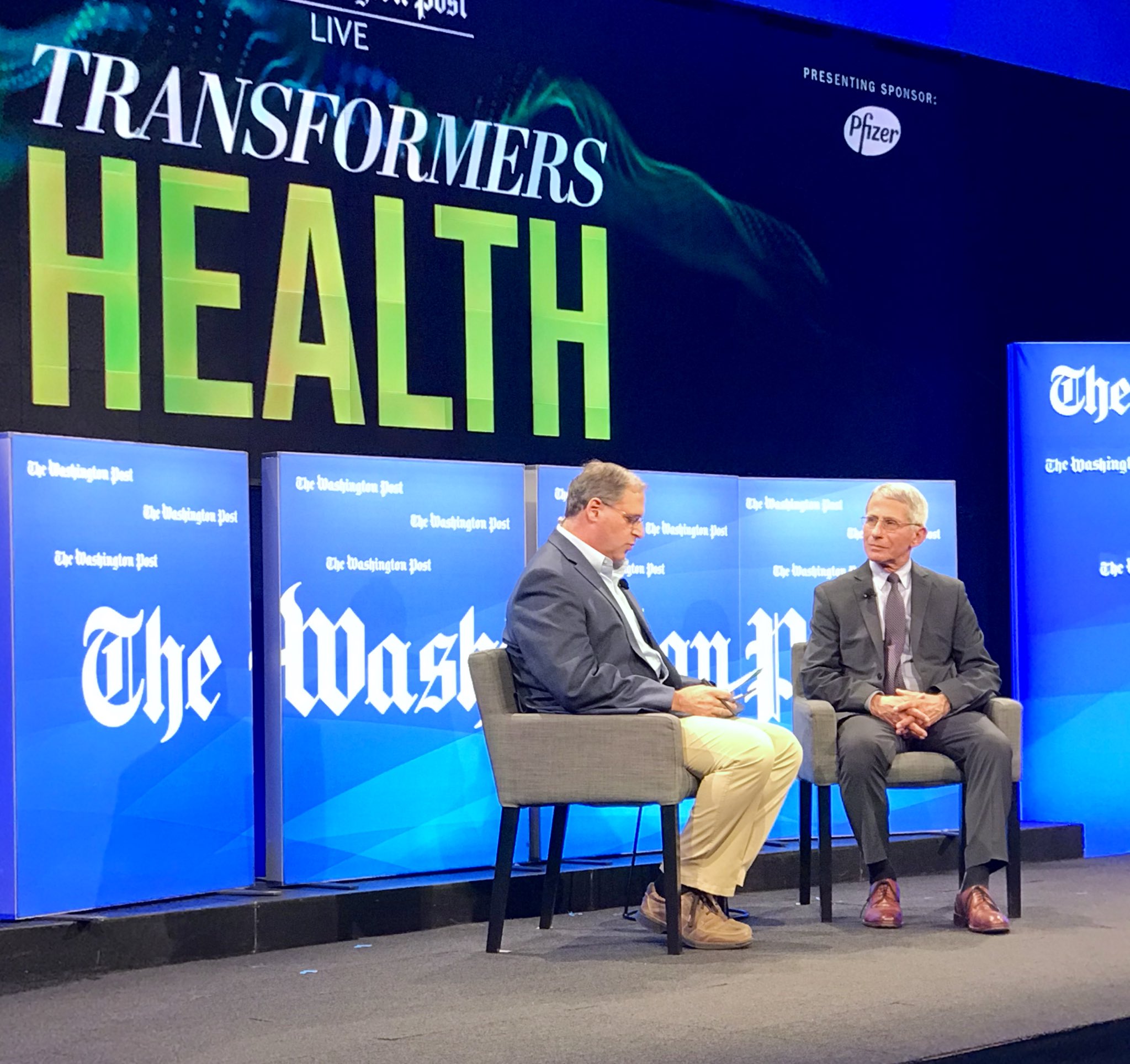Chasing a cure: the global outlook on HIV/AIDS

Dr. Anthony Fauci, Director of the National Institute of Allergy and Infectious Diseases, was treating patients with HIV/AIDS before the disease had a name. In the early 1980’s, a period he describes as the dark years of his professional career, half of the patients he saw would be dead within twelve months, and the medical community had no idea what was killing them. At the Washington Post Live event Transformers:Health on June 11, Dr. Fauci described the progress that has been made in HIV treatment, as well as the challenges that must still be addressed to tackle the disease in the United States and globally, in a discussion entitled “Chasing a cure: the global outlook on HIV/AIDS”.
Today, Dr. Fauci, who recieved the Research!America Legacy Award in 2017, explained a 20-year-old person recently infected with HIV can live for another 50 years or longer. He attributed this profound progress to scientific research advances that he described as “nothing short of breathtaking.” He particularly highlighted the ever-improving arena of treatment. RNA viruses, like HIV, mutate very easily, which allowed them to become resistant to early, single-drug therapies. However, now, by treating patients with three drugs in combination, the virus is suppressed– hiding out in a small number cells and no longer replicating– and cannot mutate. He described how combination therapy treatment is getting better and better, to the point where patients can now take one daily capsule containing all three drugs.
Dr. Fauci also described the progress that has been made in addressing HIV/AIDS globally. Ninety percent of all HIV infections occur in developing countries. Thanks to the President’s Emergency Plan for AIDS Relief (PEPFAR), established in 2003 by George W. Bush, 15 million people in the developing world have received HIV medication, and 2.5 million babies who would have been infected through maternal transmission have been born without HIV. However, even with these strides, there are still millions of people not on therapy.
As far as tackling HIV/AIDS in our own country, Dr. Fauci noted that there are 38,000 new infections in the United States each year. “That’s bad,” he said. “What’s even worse is that it has been essentially that way for over a decade.” This poses a significant challenge to President Trump’s plan to end the HIV epidemic by 2030. However, Dr. Fauci expressed cautious optimism for this goal, saying “I think it is realistic”. This is because successful HIV treatment not only saves patients’ lives, but also prevents the virus from spreading to their sexual partners. Additionally, people at high risk for HIV exposure can now take Pre-Exposure Prophylaxis, or PrEP, which decreases their risk of infection by 97%. Along with these pre-existing tools, Dr. Fauci also suggested that in the future, we will likely have an HIV vaccine. However, he noted that such a vaccine would probably not be as effective as other “classical vaccines,” like the one for measles.
When discussing what is needed to drive down new HIV infections in the United States, Dr. Fauci stated that it’s a question of political, economic and medical will, highlighting the need to focus both on at-risk demographics as well as geographic hotspots. He noted that of the 3007 counties in the United States, 48 of them, plus the District of Columbia and San Juan, account for more than 50% of all new HIV infections. He also pinpointed stigma as one of the main reasons that the people who are most vulnerable still don’t have access to HIV testing, prevention, and treatment, stating, “stigma is really a major obstacle to getting this done, unfortunately.” He spoke about the importance of increased, proactive community engagement, citing several successful examples including in the District of Columbia, where numbers of cases have decreased due to “concerted community-based efforts.”
This blog post was written by Rebecca Mandt, policy intern at Research!America.




